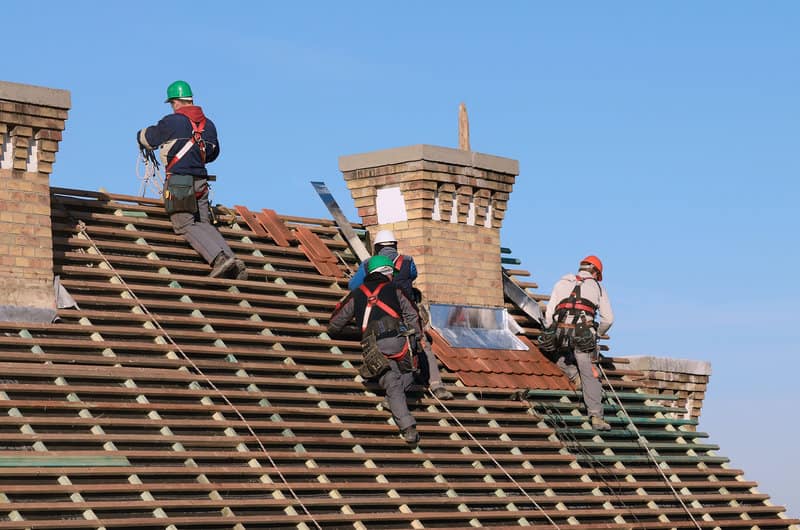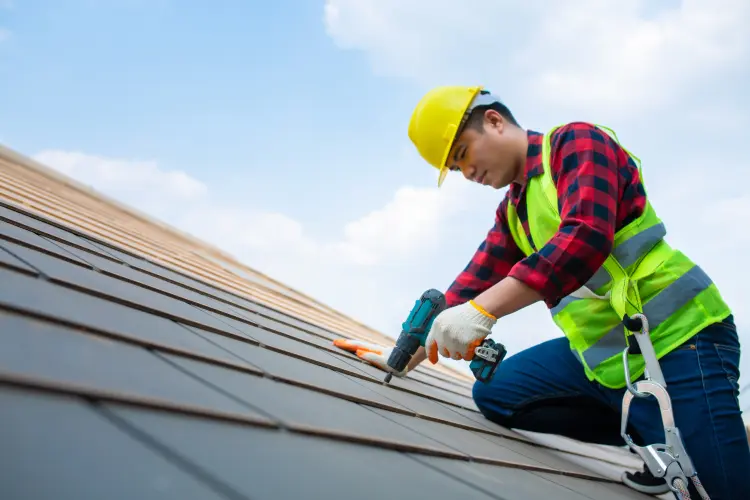A Comprehensive Overview to Effective Roof Flat Roofing System Installation
The ins and outs of level roofing setup need a careful strategy, beginning with a detailed understanding of different level roof kinds and the crucial materials required for optimum performance. A successful installment hinges not just on the selection of materials but likewise on the preparation and implementation of each step involved in the process.
Understanding Flat Roofing System Types
When thinking about flat roofing systems, it is vital to understand the numerous kinds readily available, as each offers distinct benefits and downsides tailored to specific needs. The most typical sorts of level roofings consist of Built-Up Roofing (BUR), Modified Bitumen, and Single-Ply membranes.
Built-Up Roofing includes multiple layers of asphalt and gravel, giving excellent longevity and weather condition resistance. It is particularly advantageous in areas susceptible to serious weather but might need more maintenance because of its complicated construction.
Customized Asphalt is a popular selection for its simplicity of installation and flexibility. It usually uses a self-adhesive or torch-applied approach, which can be useful for fast fixings and long-term efficiency. Nevertheless, its life expectancy can be much shorter compared to BUR.
Single-Ply membrane layers, including Thermoplastic Olefin (TPO) and Ethylene Propylene Diene Monomer (EPDM), are acknowledged for their light-weight nature and energy effectiveness. These materials are frequently chosen for business buildings due to their cost-effectiveness and simplicity of installment (Cleveland Roofing Specialists). However, they might not provide the very same degree of insulation as various other options.
Each roof covering type needs careful factor to consider based on climate, budget, and details task needs.
Crucial Products for Apartment Roof Covering
A variety of necessary materials are important for the effective installation of level roof covering systems. The selection of products directly effects toughness, performance, and total effectiveness.
One of the key materials is the roofing membrane layer, which can be created from various materials such as polycarbonate polyolefin (TPO), ethylene propylene diene monomer (EPDM), or PVC. Each type uses special advantages, consisting of UV resistance and adaptability, which are crucial for extended efficiency.
Along with the membrane, insulation products play a significant duty in power effectiveness. Stiff foam boards or polyisocyanurate insulation are prominent selections, as they give excellent thermal resistance and moisture administration.
In addition, roof covering adhesives and sealants are vital for making sure a leak-proof setup. These items have to be suitable with the picked membrane layer to stop degeneration gradually.
Getting Ready For Installment
Correct prep work is essential for a successful level roof covering installment, as it lays the foundation for a sturdy and reliable roofing system. Begin by conducting a comprehensive inspection of the existing roofing structure.
Following, gather all necessary tools and products, ensuring that they meet industry requirements. This consists of water resistant membrane layers, insulation, blinking, and fasteners. Acquaint yourself with the supplier's requirements, as adherence to these standards is vital for guarantee purposes.
Take into consideration weather condition problems; prevent installment during hefty rainfall or severe temperature levels, which can influence product click here to find out more efficiency. By taking these preparatory actions, you can boost the possibility of a successful level roofing system setup that fulfills both aesthetic and architectural needs.
Step-by-Step Setup Process
With the foundation developed with detailed preparation, the next stage entails executing the level roof covering installation methodically. Begin by making certain that the architectural deck is tidy and complimentary from debris. Next off, set up a vapor obstacle to avoid dampness buildup under the roof material. This action is vital for maintaining the roof's integrity over time.
Following the vapor obstacle installation, lay down insulation boards, ensuring they fit firmly with each other to lessen thermal bridging. Secure the insulation with suitable fasteners based on the roofing system type and neighborhood building codes - Cleveland Roofing Specialists.
Guarantee proper overlap at edges and joints to create a watertight seal. Make use of adhesives, mechanical fasteners, or warmth welding as needed. Ultimately, install flashing around perimeters, vents, and any type of roofing penetrations to boost waterproofing. After setup, conduct a complete evaluation to determine any kind of potential issues prior to concluding the job, ensuring a reliable and robust level roof covering system.
Upkeep Tips for Longevity
Regular maintenance is important to make sure the longevity and performance of a flat roofing system. One of the main jobs is to conduct regular inspections a minimum of two times a year, preferably in springtime and fall. During these inspections, search for indicators of wear, such as blisters, cracks, or merging water, which can show underlying issues.

Making sure appropriate water drainage is important to stop water build-up. Examine and clear rain gutters, downspouts, and scuppers to guarantee unblocked water circulation. In addition, examine seals around vents, skylights, and various other penetrations for any kind of indicators of wear and tear, using caulk or sealer as required to maintain a watertight barrier.
Finally, take into consideration professional maintenance solutions every couple of years for thorough maintenances. By adhering to these maintenance ideas, you can dramatically extend the life of your flat roof covering, guaranteeing it continues to be a dependable shield against the components.
Conclusion
Effective flat roofing system setup demands a systematic method encompassing extensive assessments, product selection, and precise preparation. Complying with the outlined actions during the setup process guarantees the proper application of roofing membranes and insulation while improving waterproofing with effective flashing installment. Applying routine upkeep practices substantially adds to the longevity of the roof covering system. By complying with these standards, a sturdy and reputable flat roof covering solution can be achieved, efficient in standing up to numerous environmental problems.
The intricacies of level roofing system installation need a precise method, beginning with an extensive understanding of different level roofing system types and the crucial materials needed for optimal efficiency.Appropriate preparation is see this site vital for an effective flat roofing system setup, as it lays the foundation for a sturdy and efficient roof covering system. After Source setup, conduct a thorough evaluation to determine any prospective problems before wrapping up the project, making certain a reliable and durable level roof covering system.

Comments on “Professional Cuyahoga Falls Roof Repairs for Residential and Commercial Properties”